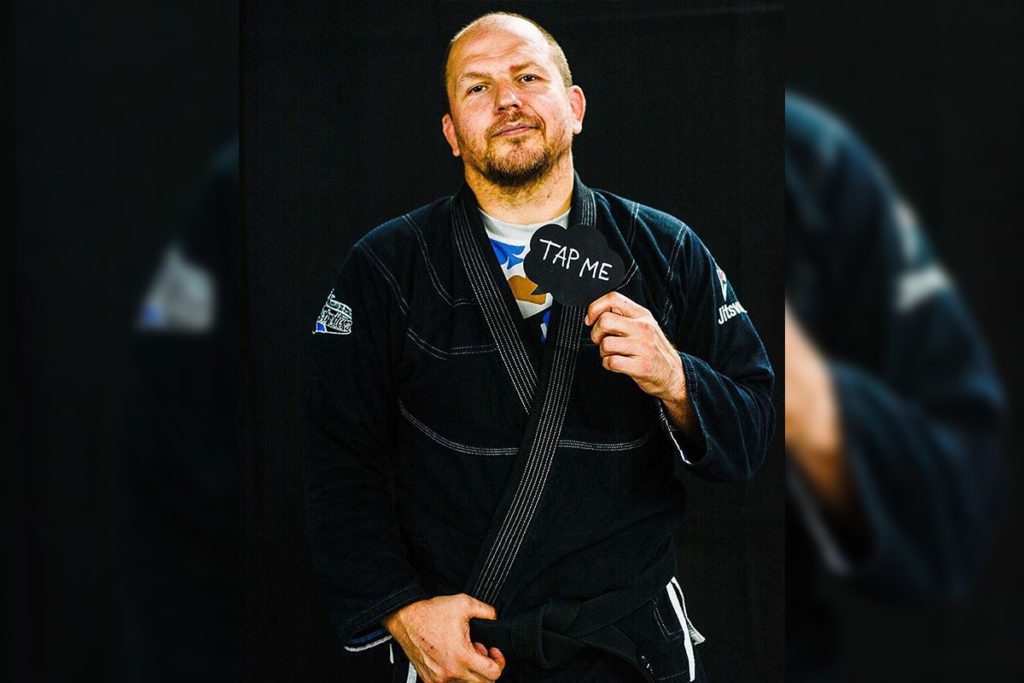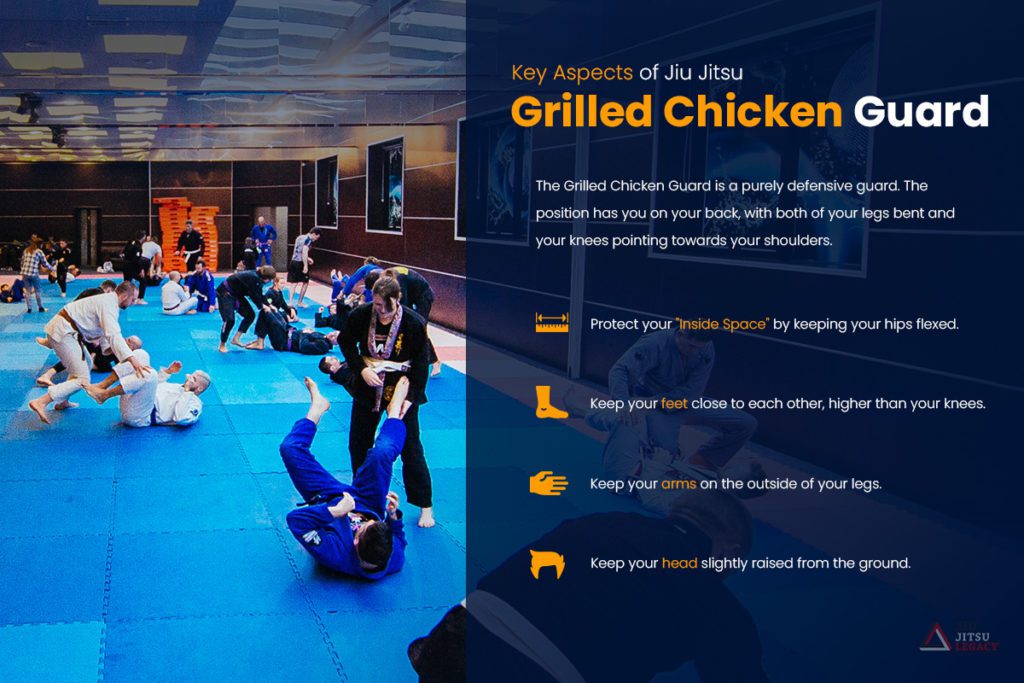Become annoying before you become dangerous. That is one of the best pieces of advice I’ve gotten in BJJ. Unfortunately for me, I received this advice as a black belt. I would’ve approached Jiu Jitsu so much differently if someone had enlightened me as a white or blue belt.
This is my attempt to help you learn this lesson as early as possible in your BJJ journey. Solid defense will make you very difficult to roll with, even if you can’t submit anyone. The best aspect of defense you can begin with is developing airtight BJJ guard retention. That is what the
What is Guard In BJJ?
Let’s start at the beginning if you’re truly going to understand what I am trying to preach here. If you want to be good at Brazilian Jiu Jitsu, there are two things that you need to learn: how to have a great guard and how to pass the guard. Without these two skills, no amount of submissions or takedowns will make you good at Jiu Jitsu.
Let’s start with the guard. A guard is any position in BJJ in which you, as the guard player, have your legs in between yourself and the guard passer.
Before I go any further, a guard player is the person with their butt or back on the ground. The guard passer is the one whose butt is off the mats (usually kneeling, half-kneeling, or standing).
Any position where you have at least one leg in between you and the opponent constitutes a guard. Even if it is just a tiny part of a leg, it still counts. This is why there are so many different guard positions – people get creative when it comes to using their legs to create distance from the guard passer in grappling.
That said, the guard (regardless of variation) is first and foremost defense – keeping the guard passer at bay. Learning to prevent passes must happen before learning to attack from the guard – because if someone has passed your guard already no amount of knowledge of guard attacks is going to help!
5 Key Aspects of the Grilled Chicken Guard
The

Credit: Instagram
The position looks like a rotisserie chicken, but since there’s no specific word for this in Estonian (according to Priit) he named it grilled chicken. The position has you on your back, with both of your legs bent and your knees pointing towards your shoulders.

In fact, they should point slightly wider than your shoulders. The crucial point here is to keep your hips as flexed as possible in order to ensure that you’re protecting your inside space (the space between your armpits and knees).
Your feet should be near each other and should point at the center of your opponent’s chest at all times. Keep your feet slightly higher than your knees to ensure that the guard passer can’t easily drag or push on your ankles.
Your arms should be placed on the outside of your legs (yes, you read that correctly). This is one of the game-changing details on the subject of the defensive guard. Instead of reaching forward with your arms trying to grip something, keep them on the outside of your legs, with your elbows as close as possible to your body.
Finally, your head should be slightly raised from the ground, so that you can follow your opponent with your eyes, looking through the “sight” made by your feet. It will take some tinkering to figure this out, as trying to keep your head up too high will fatigue your neck.
So, let’s recap. Lie on your back, knees as close as possible to your shoulders, feet together and following the opponent’s chest, elbows close with arms placed on the outside of the legs, head held up high just enough to help you easily see follow the guard passer with your gaze.
The Benefits of Grilled Chicken Guard
Here are 5 unique aspects of the grilled chicken guard that I personally found truly game-changing.
360 Reach
Once you have the
If/when they move to the side, let’s say your right, you simply tilt to the right, refocusing your “sight” so that it points to their chest. If they keep moving around you (towards your head) you still follow with the feet, going into an inverted guard without having to do Berimbolo or fancy roll.
You get where I am going with this. The guard passer can circle you like a vulture, but there’s not much they can do without risking exposing the back of one (or both) of their legs which will allow you to go into attack mode immediately.
Reverse Roles of the Arms and Legs
One of my favorite aspects of playing the grilled chicken guard. This one concept truly changed the way I approach BJJ guard retention and playing defensive guard. Usually, when in guard, we use our arms to pull and our legs to push. These motions, however, often get us deeper in trouble if we’re playing guard defensively.
The grilled chicken guard works by reversing the roles of your hands and arms. What this means is that you will use your arms to push, and your legs to pull (for the most part). This means you won’t be reaching needlessly with your arms trying to get a grip, but rather making contact with the shins or knees of your opponent without even trying.
At the same time, instead of kicking away with your legs, thus exposing your knees to grips and opening up your inside space, you simply pull by flexing your hips and keeping your knees tight to your shoulder.
You will be amazed at how well this works once you give it a try.
Specific Defense
For those that are big on “when this do that” moves, instead of broad concepts, the grilled chicken guard system does offer such direct responses. There are different reactions to opponents pushing, pulling, or trying to slide by your legs.
There are also specific responses to common high-percentage guard pass techniques, like the leg drag, Torreando, knee cut, leg lock attacks etc. It is precisely the blend of having a ready response to common issues combined with the open-ended concept of retaining the grilled chicken guard when facing something unknown that makes it so effective in any situation.
Non-Specific Defense
Facing unknown or unpredictable attacks (cartwheel passes, breakdancing-inspired assaults, and other weird stuff that is not unknown in BJJ) falls under non-specific defense. The beauty of this BJJ guard retention system is that it can help you defend against any attack as long as you adhere to the core principles that make it effective.
As long as you protect your inside space, keep your limbs to yourself without reaching, and are not overzealous about looking to initiate contact, you will find it easy to retain your guard. If an opponent comes too close, you can use their maneuvering to get a grip hook or whatever else you need to transition to your favorite offensive guard.
Asymmetry
Speaking of switching to offense, my second favorite thing about the
In that sense, tilting and changing angles (which are big parts of the system) allow you to position yourself asymmetrically in relation to your opponent. This will both allow you to easily transition into offense as well as capitalize on their attempts to try and attack or look to get you back into a symmetrical position.
The Modern Approach to Defensive BJJ
Priit has most definitely changed the outline of Jiu Jitsu with his defensive BJJ as much as John Danaher did when he systematized leg locks.
The grilled chicken guard is just one part of the modern defensive BJJ philosophy. The system involves defense and escapes against all major controlling positions in Jiu Jitsu as well as most submissions. It is based on concepts and principles, not one-off techniques, which makes it easy to learn and very effective.
Imagine having a system that basically makes you ultra-difficult to submit or pin. Now imagine that there is also a guard that is part of that system and serves as a hub which allows defense to turn into offense in the blink of an eye.
Well, the guard you’re imagining is grilled chicken. This guard will give you a peace of mind you would never have thought possible in grappling. It is hard to panic when you know you can deter any attack that comes your way, leaving you clear-headed to set up traps and attacks of your own.
Defense Is First, Not All
There’s a certain give and take when you’re playing guard in Brazilian JIu Jitsu. You can’t just focus on not letting someone pass your guard. But, I argue that this should be the first thing to focus on!
Even the man who systematized the grilled chicken guard, Priit Mihkelson, agrees, saying that “defense doesn’t win you fights.” While not losing goes a great way to help you win, you will still need to either earn points or get a submission. That means you will need to go into offense, and a purely defensive guard is not a good launching spot for reliable offense.
Once you’ve developed a strong defensive understanding of the guard it is essential to continue learning, adding offensive elements to your now impassable guard.
In Conclusion
The
Once you’ve developed confidence in your guard retention and defense you’ll be able to launch attacks without fear of losing position or getting stuck somewhere miserable for the rest of the round!

Ogi is a black belt that does Jiu Jitsu full time and is very passionate about anything grappling-related.
He is also the head coach of Enso Jiu Jitsu in Macedonia and an aspiring Globetrotter.
